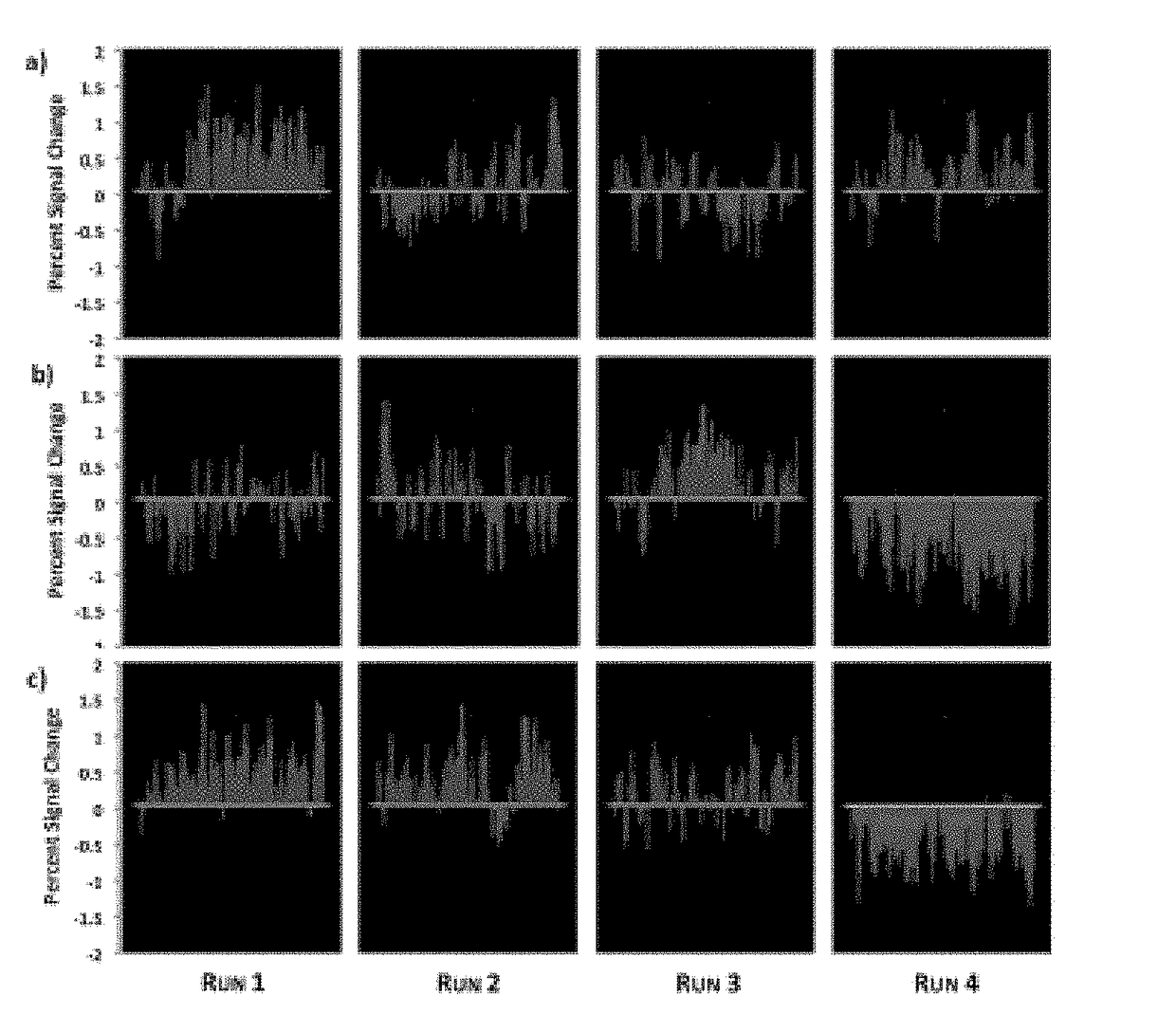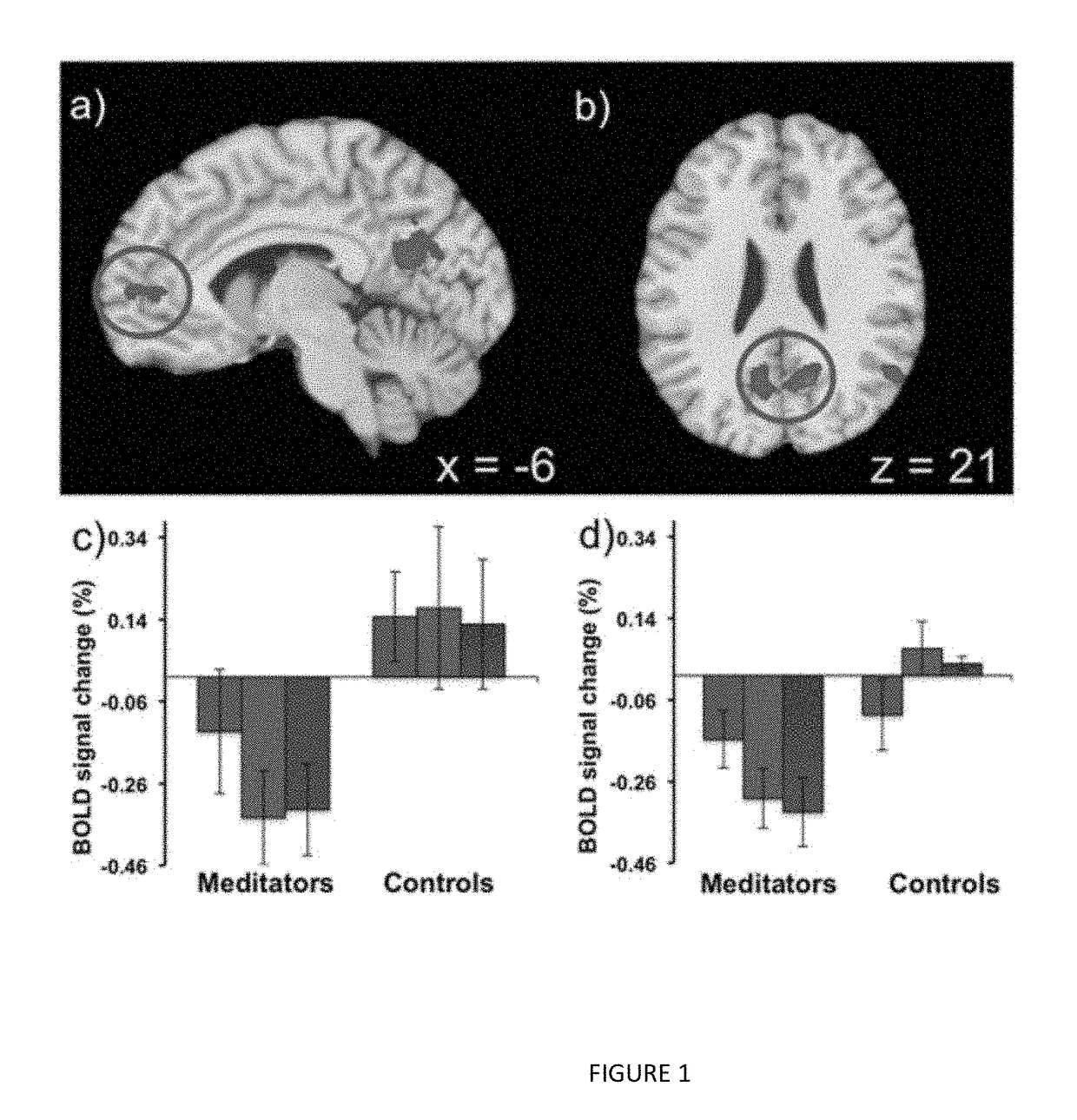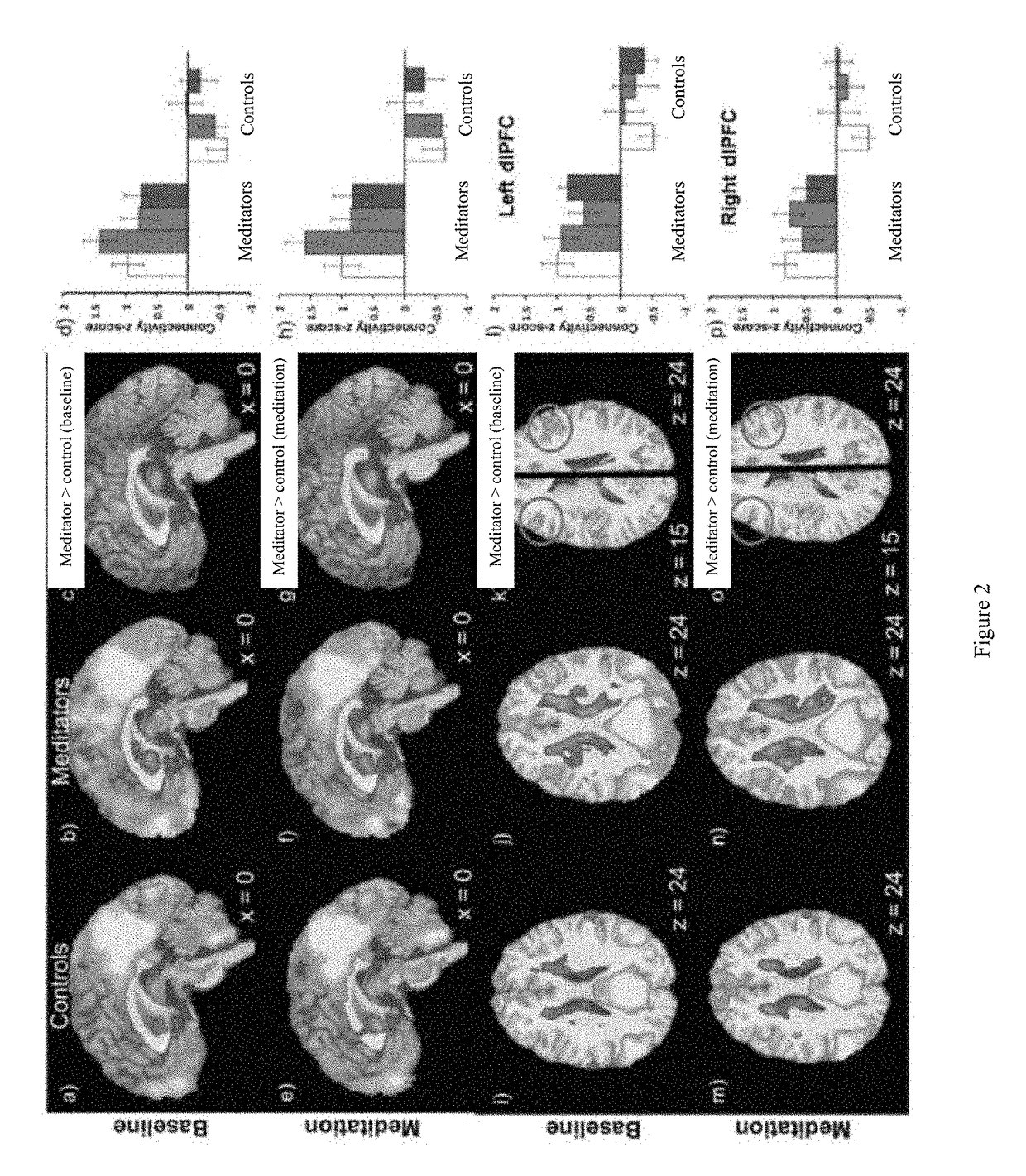Method of correlating brain activity
a brain activity and brain activity technology, applied in the field of brain activity correlating, can solve the problems of not being able to establish the link between the meditative practices and the direct links between the meditative practices that are part of mindfulness training and the changes in neurobiology remain elusive, so as to reduce the represented brain activity, reduce mind-wandering and stress, and enhance the meditative state of a subject.
- Summary
- Abstract
- Description
- Claims
- Application Information
AI Technical Summary
Benefits of technology
Problems solved by technology
Method used
Image
Examples
experimental examples
[0051]The invention is further described in detail by reference to the following experimental examples. These examples are provided for purposes of illustration only, and are not intended to be limiting unless otherwise specified. Thus, the invention should in no way be construed as being limited to the following examples, but rather, should be construed to encompass any and all variations which become evident as a result of the teaching provided herein.
[0052]Without further description, it is believed that one of ordinary skill in the art can, using the descriptions and the illustrative examples hereinthroughout, practice the present invention. The following examples therefore, are not to be construed as limiting in any way the remainder of the disclosure.
example 1
n Experience is Associated with Differences in DMN Activity and Connectivity
[0053]As contemplated herein, it was hypothesized that the DMN would be an important locus of change following meditation training. Specifically, it is believed that brain activation during mindfulness meditation in experienced meditators as compared to their matched controls would involve (1) relatively reduced recruitment of the DMN, and (2) relatively increased connectivity between DMN and brain structures that are implicated in monitoring for conflict as well as cognitive control, such as the dorsal anterior cingulate (dACC), and dorsolateral prefrontal cortices (dlPFC) respectively. To test this, fMRI was used to assess brain activation during both a resting state and a meditation period in experienced mindfulness meditation practitioners and controls. To determine common neural activation patterns across meditations, participants were scanned during periods of Concentration, Loving-kindness, and Choice...
example 2
son Experience of Mind-Wandering Correlate with Increased PCC Activation, and Meditation Correlates with Decreased Activation in this Brain Region
[0078]In the following experimental example, rt-fMRI neurofeedback is used to test the feasibility of linking subjective self-report of a meditative state to neural activity in the PCC. The PCC is selected for several reasons. First, it has been implicated as a central node of the DMN. Second, the PCC is specifically and robustly deactivated during different types of meditation. In is hypothesized that individual reports of first-person experience of mind-wandering or other types of self-referential activity would correlate with increased PCC activation and that meditation would correlate with decreased activation in this brain region. Further, it was hypothesized that individuals would be able to discriminate between PCC activity and activity in the posterior parietal cortex, a region in the DMN that is tightly temporally coupled to the P...
PUM
 Login to View More
Login to View More Abstract
Description
Claims
Application Information
 Login to View More
Login to View More - R&D
- Intellectual Property
- Life Sciences
- Materials
- Tech Scout
- Unparalleled Data Quality
- Higher Quality Content
- 60% Fewer Hallucinations
Browse by: Latest US Patents, China's latest patents, Technical Efficacy Thesaurus, Application Domain, Technology Topic, Popular Technical Reports.
© 2025 PatSnap. All rights reserved.Legal|Privacy policy|Modern Slavery Act Transparency Statement|Sitemap|About US| Contact US: help@patsnap.com



